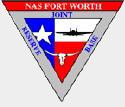Hobby Master HA4604 RAF Lockheed-Martin F-35B Lightning II Joint Strike Fighter - Edwards AFB [Low-Vis Scheme] (1:72 Scale)
"The F-35 program executive officer, has stated that the 'F-35 enjoys a significant Combat Loss Exchange Ratio advantage over the current and future air-to-air threats, to include Sukhois, which are currently being flown by the Russian, Indian, and Chinese Air Forces.'"
- Maj Gen Charles R. Davis, USAF, the F-35 program executive officer
 The Lockheed Martin F-35 Lightning II is a fifth-generation, single-seat, single-engine, stealth-capable military strike fighter, a multirole aircraft that can perform close air support, tactical bombing, and air superiority fighter missions. The F-35 has three different models; one is the conventional takeoff and landing variant, the second is short takeoff and vertical-landing variant, and the third is a carrier-based variant.
The Lockheed Martin F-35 Lightning II is a fifth-generation, single-seat, single-engine, stealth-capable military strike fighter, a multirole aircraft that can perform close air support, tactical bombing, and air superiority fighter missions. The F-35 has three different models; one is the conventional takeoff and landing variant, the second is short takeoff and vertical-landing variant, and the third is a carrier-based variant.
The F-35 is descended from the X-35, the product of the Joint Strike Fighter (JSF) program. Its development is being principally funded by the United States, with the United Kingdom, and other partner governments providing additional funding. It is being designed and built by an aerospace industry team led by Lockheed Martin with Northrop Grumman and BAE Systems as major partners. Demonstrator aircraft flew in 2000, with the first flight on December 15th, 2006.
The F-35B Lightning II is the Marine Corps variant of the Joint Strike Fighter and features a vertical lift fan and pivoting engine nozzle to deliver vertical landing and short takeoff capability to expeditionary airfields. The F-35 will replace AV-8B Harrier IIs in the Marine Corps inventory.
Designed to operate from austere bases and a range of air-capable ships with its short takeoff/vertical landing capability, the F-35B can also takeoff and land conventionally from longer runways on major bases. F-35B aircraft have been delivered to the U.S. Marines and the U.K., whose forces are training together at the Integrated Training Center at Eglin Air Force Base. STOVL aircraft are also stationed at the first operational F-35 base, Marine Corps Air Station Yuma, Ariz., and are completing flight test at Naval Air Station Patuxent River, Md. The Italian Air Force will also operate the B-variant. The F-35B has a Lift Fan just behind the cockpit and an engine that can swivel 90 degrees when in short takeoff/vertical landing mode. Because of the Lift Fan, the STOVL variant has smaller internal weapon bay and less internal fuel capacity than the F-35A. It uses the probe and drogue method of aerial refueling.
Pictured here is a 1:72 scale replica of a RAF Lockheed-Martin F-35B Lightning II Joint Strike Fighter.
Sold Out!
Dimensions:
Wingspan: 5-3/4-inches
Length: 8-1/2-inches
Release Date: October 2015
 Historical Account: "Performance Anxiety" - Some public figures such as conservative politician Dennis Jensen in Australia, and American combat aircraft expert Pierre Sprey, have expressed concern over the aircraft's combat capabilities with specific regard to radar visibility, weight to power ratio, turn rate and inflammability. The concerns about the F-35's performance have resulted in part from reports of RAND simulations where numerous Russian Sukhoi fighters defeat a handful of F-35s. Dr. Jensen also suggested it is inferior to current and superseded aircraft already in service around the world. As a result of these issues the Australian defence minister, Joel Fitzgibbon, requested a formal briefing from the Department of Defence on the computer simulation. This briefing stated that the reports of the simulation were inaccurate, and that it did not compare the F-35's performance against that of other aircraft. Controversial Australian engineer Carlo Kopp has also claimed that new long-wavelength radars operated by the Russian armed forces can detect the F-35 at any angle. Additionally, Kopp claims that the F-35 is significantly stealthy only in a narrow cone around its nose, and is more like a conventional aircraft in a clean configuration from the side aspect, and only partially stealthy in certain radar wavelengths from the rear aspect.
Historical Account: "Performance Anxiety" - Some public figures such as conservative politician Dennis Jensen in Australia, and American combat aircraft expert Pierre Sprey, have expressed concern over the aircraft's combat capabilities with specific regard to radar visibility, weight to power ratio, turn rate and inflammability. The concerns about the F-35's performance have resulted in part from reports of RAND simulations where numerous Russian Sukhoi fighters defeat a handful of F-35s. Dr. Jensen also suggested it is inferior to current and superseded aircraft already in service around the world. As a result of these issues the Australian defence minister, Joel Fitzgibbon, requested a formal briefing from the Department of Defence on the computer simulation. This briefing stated that the reports of the simulation were inaccurate, and that it did not compare the F-35's performance against that of other aircraft. Controversial Australian engineer Carlo Kopp has also claimed that new long-wavelength radars operated by the Russian armed forces can detect the F-35 at any angle. Additionally, Kopp claims that the F-35 is significantly stealthy only in a narrow cone around its nose, and is more like a conventional aircraft in a clean configuration from the side aspect, and only partially stealthy in certain radar wavelengths from the rear aspect.
The criticism of the F-35 has been dismissed by the Pentagon and manufacturer. The USAF has conducted an analysis of the F-35's air-to-air performance against all 4th generation fighter aircraft currently available, and has found the F-35 to be at least four times more effective. Maj Gen Charles R. Davis, USAF, the F-35 program executive officer, has stated that the "F-35 enjoys a significant Combat Loss Exchange Ratio advantage over the current and future air-to-air threats, to include Sukhois", which are currently being flown by the Russian, Indian, and Chinese Air Forces. (courtesy Wikipedia)


